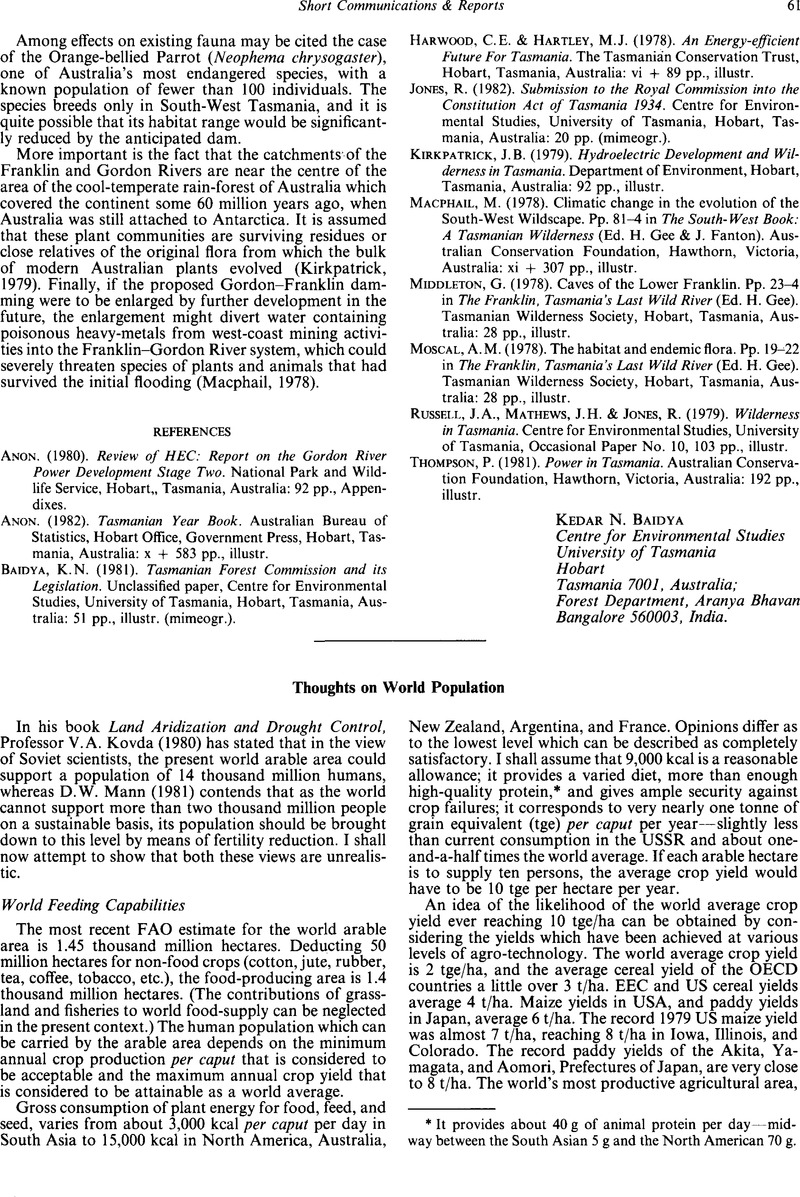No CrossRef data available.
Article contents
Thoughts on World Population
Published online by Cambridge University Press: 24 August 2009
Abstract
An abstract is not available for this content so a preview has been provided. Please use the Get access link above for information on how to access this content.

- Type
- Short Communications & Reports
- Information
- Copyright
- Copyright © Foundation for Environmental Conservation 1983
References
REFERENCES
Buringh, P. & Heemst, H.D.J. van (1977). An Estimation of World Food Production based on Labour-oriented Agriculture. Centre for World Food Market Research, Wageningen, The Netherlands: 46 pp.Google Scholar
Carr-Saunders, A.M. (1936). World Population. Oxford University Press, Oxford, England, UK: xv + 336 pp.Google Scholar
Frejka, T. (1981). World Population Growth Prospects. Population Council, New York, NY, USA: 29 pp.Google Scholar
Fulton, T. & Braestrup, P. (1982). Issues in US agriculture. Dialogue (Washington, DC), 56, pp. 2–9, 69–70, illustr.Google Scholar
Gilland, B. (1979). The Next Seventy Years. Abacus, Tunbridge Wells, England, UK: viii + 133 pp.Google Scholar
Kovda, V.A. (1980). Land Aridization and Drought Control. Westview, Boulder, Colorado, USA: xix + 277 pp.Google Scholar
Mann, D.W. (1981). Fewer people for a better world: A plea for negative population growth. Environmental Conservation, 8 (4), pp. 260–1.Google Scholar
Revelle, R. (1976). The resources available for agriculture. Scientific American, 235 (3), pp. 164–8.Google Scholar


